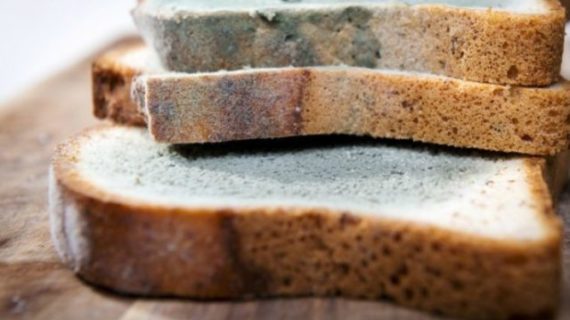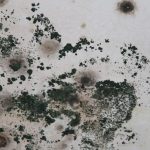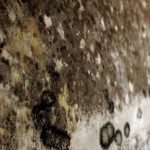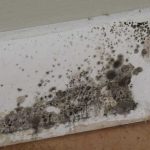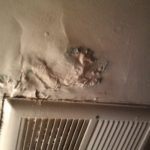Black, blue, green, white, you might have seen it all. It can be a bit upsetting to see the bread you had just bought three days ago is suddenly inedible because you see some unusual spots on it. Yet, just how dangerous mold on bread could be?
Some of us might have caught in a situation where you can’t stand throwing off the bread to the trash. You end up cutting off the mold out and eat the rest of the bread anyway.
Before you decide to do that again, you better read on to know more about the mold on bread.
How Does Mold Grow on Bread?
Mold grows, yet it is not a plant. It comes from the fungi family called the Hyphomycetes and produces spores through the air. It grows as multicellular filaments. It has diverse taxonomic types, which makes it has different colors like blue, green, black, red, and white.
Unlike other plants, mold has no chlorophyll. Plants with chlorophyll have the ability to absorb energy from the sun and convert it as nutrition.
Otherwise, mold needs to absorb the nutrition from other plants, animals, or medium. Bread is one of the perfect media for mold to grow.
Mold does not grow well in direct sun light. If bread is stored in a cupboard, plastic container, or a bread box, it is more likely to grow mold. Notice that all the storage that you use often located far away from direct sun light.
Storing it inside a breadbox near the window would also do nothing. The sun light will only give warmth, and it could help molds to grow even faster.
However, mold also likes moisture and humidity. It means, storing the bread inside the refrigerator would less likely to help because it gives the perfect air for the mold to grow.
It all started with unseen spores in the air. Millions of mold spores are in the air, and we couldn’t even notice because of its micro size.
The spores will then drop, land to the bread, and multiple. We cannot see the mold’s growth until it multiplies to a set of an organism.
Often, mold on bread has a dusty texture which actually means that they are ready to release more spores into the air. Once released, the spores might land on another food or medium and grow.
Knowing More about Mold that Grows on Bread
If you have experienced mold on bread many times before, you might have noticed that it has a different color each time. In fact, the color difference is determined by the taxonomical structure of the mold.
At least, there are three mold types that are often found on bread. Based on its colors, below are the most common ones:
- Rhizopus
You may have experienced black mold on bread. It comes from the species Rhizopus stolonifer, and it is one of the most common molds on bread. This species of mold can also grow on fruits which cause the fruits to rot.
Among other mold species, black mold has the fastest growth. Black mold lives by dissolving the bread and absorb the nutrition. Furthermore, it can cause infections on a human.
- Neurospora
Neurospora crassa is red mold that typically grows on bread. It has a pinkish red color, and it grows easily on the right media such as bread. However, it has been used in numerous experiments relating to circadian rhythms, epigenetics, gene silencing, and cell fusion.
It is sometimes called as “model fungi” because it has a full life cycle and consists of both fungi and yeast.
- Penicillium
Penicillium might be the most common mold on bread. It has a blue-green or gray appearance with white borders. It grows in patches and dissolves the bread to grow. This species of mold grows easily at a low temperature with low light.
Usually, you can find this mold grows on food inside the refrigerator. Penicillium also produces antibiotics and has been used in many experiments regarding bacteria in human body.
However, the fact does not make Penicillium safe to eat. Your body might be allergic to it and eating it can cause serious infections.
Is It Safe to Eat Mold on Bread?
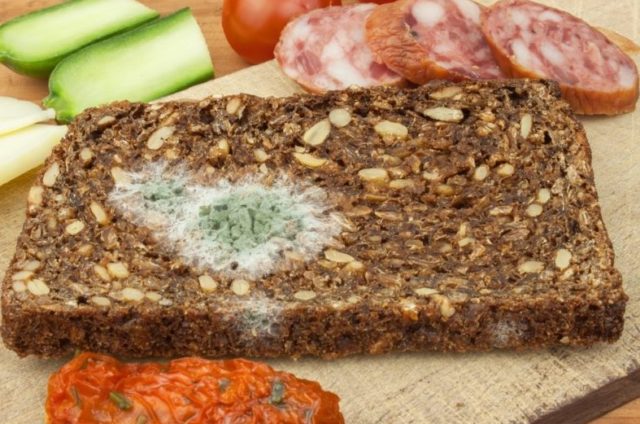
Speaking in a small amount, the mold is harmless. The most common effect that can be caused by mold on bread is nausea and vomiting. However, some people might be allergic to mold.
If you are allergic to it, the effect can be more severe as it can be poisonous to your body. This is why you should avoid eating bread with mold on it.
Sometimes, wasting a box of bread might feel wrong. Yet, cutting the mold off the bread would not do you any favor. Once you see the mold spots on the outside, it is likely to have grown on the inside, too.
Some people think that putting the bread in a microwave would solve the mold problem. Still, microwave cannot kill the mold. You might instead release more mold spores, and it can affect the other foods in your kitchen.
So, the only way to get rid of it is to throw away the affected bread and clean the bread box, container, refrigerator, or cupboard where you stored it.
Don’t Let Your Bread Grows Mold: How to Prevent It
In reality, you cannot see the mold spores. It means you cannot see where it lands and grows. Though, you can change the way you store the bread to prevent the mold from growing.
First, you really need to make sure about the purchase size. If you have a small family, you might want to consider buying big loaf or package of bread.
Most of the bread will be in a good condition for only three to four days. If the whole family cannot consume the bread in three or four days, consider buying a smaller loaf.
Second, make sure that you store the bread in a clean place. If you wonder why the bread grows mold each time you store it in the same bread box, you might want to consider washing the box. The storage might have spores in it and grows on the bread.
Freezing the bread can also be one of the solutions to this. The bread can stay longer if you freeze it. However, you will need to toast or microwave it before eating the bread, which means more time to prepare.
Though it seems small, you cannot underestimate mold on bread. It can cause serious allergic reaction and illness. So, are you sure you want to cut off the mold and eat the bread? Stop the habit now to live a healthier lifestyle!
